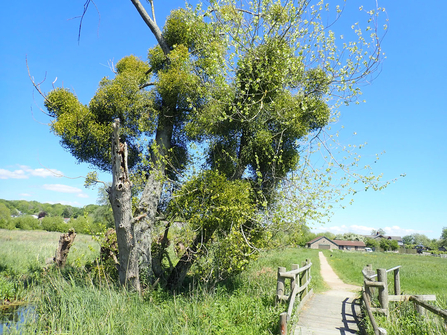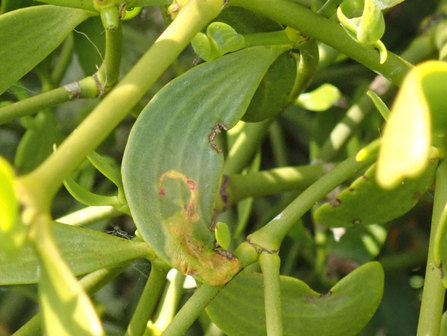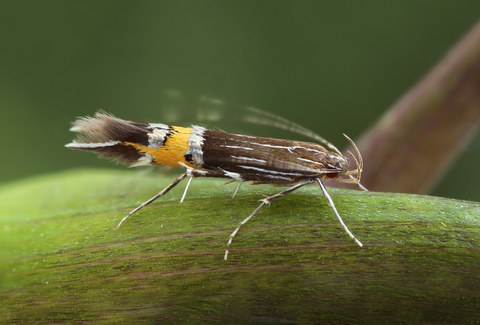I first visited Magor Marsh in the spring of 2016, and was so captivated by the mix of reedbed, fen and wet woodland habitats that I immediately started making plans to do some moth trapping there. This came to fruition on the evening of 6 August 2016, when moth trapping friends Paul Parsons and Marc Botham joined me at the site. Between us we set up five traps, and by the wee small hours had recorded an impressive 113 moth species. These included some lovely wetland moths such as Brown-veined Wainscot, Bulrush Wainscot, Double Lobed and Crescent, and the reedbed micro-moths Donacaula forficella and Chilo phragmitella.
It came as more of a surprise when Sam Bosanquet, the Gwent micro-moth recorder, confirmed that three of the species we’d recorded were firsts for the county! These were the tortrix moth Endothenia quadrimaculana, whose caterpillars feed on Marsh Woundwort, Coleophora lineolea, which also feeds on woundworts as well as horehounds, and the nationally scarce Elachista utonella, associated with sedges. At the time we thought the latter species was new for Wales, but it turned out that there was a previous record from Pembrokeshire in 1875! Sam also informed us that our record of the stripy gelechiid moth Monochroa palustrella, also nationally scarce, was only the second for the county.
All these exciting new records on one night suggested that the micro-moth fauna of Magor Marsh must be rather under-recorded. Sam had made daytime visits and recorded some nice species, but hadn’t light trapped there. Neil Horton, author of the book Monmouthshire Lepidoptera, trapped a few times between the late 1960s and the early 1990s, but little trapping had been done since then. I was keen to go back and do more trapping, but somehow this didn’t happen until 2021, when the wetland-themed Moth Night prompted me to organise a session with the South Wales Branch of Butterfly Conservation.
That session, on 10 July, proved a little disappointing thanks to clear skies, light winds and rapidly-dropping temperatures – not ideal weather for moths, which prefer warm, cloudy nights. Between six traps run by Paul Parsons, Tate Lloyd and me we managed 74 moth species – a rather low total for such a good site in peak moth season. The disappointment was short-lived, however, when I realised the next day that a little grey micro-moth that had turned up at one of my traps was Gelechia muscosella. This species, associated with willows, has provisional red data book status and had never been recorded in the western half of Britain before. Previous records were from wetland habitat, similar to that at Magor, at scattered sites in eastern England. This was not a species any of us would have expected to turn up in Wales, which just goes to show how much we still have to learn about micro-moths.
As well as the light trap recording, some exciting micro-moths have been found at Magor in the daytime. On a family visit in May 2019 I was lucky to spot a leaf-mine made by the Mistletoe Marble Celypha woodiana, on a large clump of Mistletoe overhanging a ditch. Leaf-mines are squiggly lines or blotches made by caterpillars feeding inside the leaf, leaving the upper and lower leaf surface intact. Mistletoe Marble is a scarce moth known only from western England, and hadn’t reliably been recorded in Wales before (though there is a possible old record from Tintern). Sadly the poplar tree on which the Mistletoe was growing has now died, likely killed by its heavy load of parasitic Mistletoe, but there are other clumps of the plant on poplars at the site so hopefully the moth has survived.





